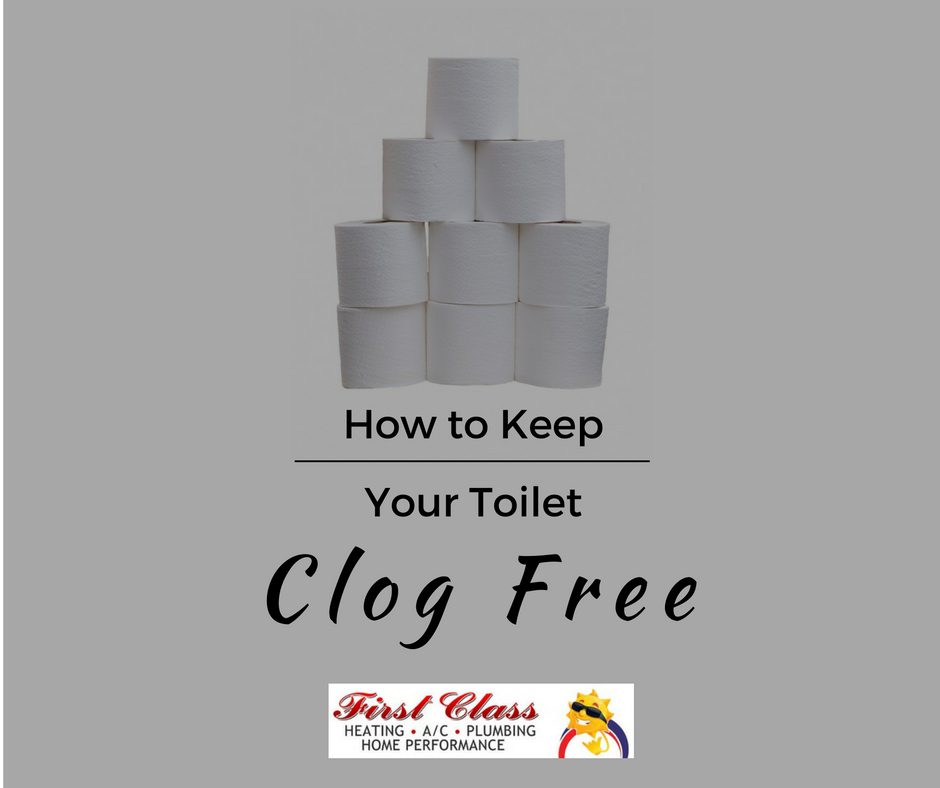
A clogged toilet could make anyone frustrated, particularly individuals who have only one bathroom in the home. In addition to the inconvenience, a clogged toilet can become worse and grow larger, resulting in a completely blocked drain that does not allow water to flow at all. Knowing which items clog a toilet and simple tricks to keep the water flowing smoothly can prevent a clog from having a chance to form and cause a drain obstruction.
Know What Not to Flush
One of the best ways to keep a toilet clog-free is to understand which items a person should never put into a toilet. Bathroom wipes, disposable diapers, paper towels, and sanitary napkins cause clogs and may result in a sewer system backup. Cotton balls, adhesive bandages, such as Band-Aids, and dental floss are also common culprits of clogs. Although human hair and pet hair are natural products, they form large balls that can also obstruct a drain. Remember that if the item is not human waste or toilet paper, avoid flushing it.
Flush Frequently
Large amounts of toilet paper and human waste in a toilet can create a clog. It is a good idea to flush at least twice when a toilet is very full. You want to avoid large quantities of toilet tissue from forming a ball that only partially dissolves, so don’t skimp on flushing more than one time.
Use Flush Cleaners
Keeping your toilet clean can go a long way in preventing a clog from forming in the first place. Flush cleaners are convenient, easy to install, and clean a toilet each time it’s flushed. An individual simply needs to place the product in the toilet’s cistern to cut down on clogs and enjoy the added benefit of a sparkling-clean toilet.
Take Quick Action on Slow Drains
If you notice a slow flush, it is probably time to pull out your toilet plunger. A weak flush often indicates the presence of a clog, and removing the obstruction can keep it from becoming a larger clog that blocks all water flow. The superior seal of a flange plunger makes this hardware better for use on toilets than a cup plunger.
Keep Bathroom Items Away from Your Toilet
To prevent toilet clogs, the area of the commode should be free of the staple items in many individuals’ bathrooms, such as whole toilet paper rolls, boxes of sanitary napkins, and decorative objects. Parents should stress the importance of not throwing objects into a toilet to a small child, and it is risky to install shelves holding bathroom products directly above a toilet.
Many people place non-flushable items into a toilet out of habit, but understanding which products do not break down in water is important when trying to avoid clogs. Monitoring a toilet’s water flow and taking action when the flow slows down can help you recognize that there is a clog that needs attention. Smaller clogs may require a toilet plunger or drain cleaner liquid to dislodge them, but an individual might need the help of a plumber to address larger clogs or any plumbing damage that clogs can create.
It is important to address your plumbing issues quickly, and some fixes, including the removal of tree roots that block free water flow, may require the need of a licensed plumber’s expertise. First Class HVAC has been helping residents in Delaware towks like Milford and Maryland towns like Salisbury with plumbing maintenance for more than 40 years. Contact us today for emergency or 24/7 plumbing service, and experience our fair and competitive pricing for plumbing repairs.

